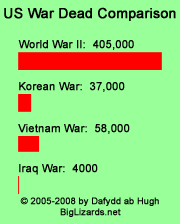January 17, 2010
Slicing the Globaloney: a Case Study!
It's always exhilarating, not to mention educational, to see how real science is made... especially when the conclusion just happens to fit the prevailing global-warming story-board so perfectly! Here's how the Intergovernmental Panel on Climate Change (IPCC), the main "scientific" body pushing anthropogenic global warming (AGW), developed one of their most politically influential, not to mention incendiary conclusions:
1999 -- Fred Pearce, writing for New Scientist, notices a comment by Syed Hasnain, "a little-known Indian scientist then based at Jawaharlal Nehru University in Delhi." Hasnain warned that "climate change will melt most of the Himalayan glaciers by 2035."
1999 -- Pearce interviews Hasnain by phone:
Pearce said: "Hasnain told me then that he was bringing a report containing those numbers to Britain. The report had not been peer reviewed or formally published in a scientific journal and it had no formal status so I reported his work on that basis."
2005 -- Six years after the little squib in New Scientist, the WWF (I think that would be the World Wildlife Fund, not the defunct World Wrestling Federation) picks it up and incorporates it into a political white paper, "an Overview of Glaciers, Glacier Retreat, and Subsequent Impacts in Nepal, India and China." The purpose of this paper is to push AGW theory, and not incidentally, to advertise for contributions to and membership in the WWF:
The report credited Hasnain's 1999 interview with the New Scientist. But it was a campaigning report rather than an academic paper so it was not subjected to any formal scientific review.
2007 -- Another two years pass... and the IPCC finally stumbles across the WWF publication just as the U.N. body is preparing its "benchmark report" on global warming. Impressed by the rigorous science in the recruiting advert for the World Wildlife Fund, the IPCC incorporates the claim directly into the report without troubling to backtrack it or check its provenance.
However, the IPCC does realize that the mere handwaving in the WWF advert might not be quite strong enough as is; so the IPCC punches up the claim just a skosh, to make it sound more, you know, science-y:
When finally published, the IPCC report did give its source as the WWF study but went further, suggesting the likelihood of the glaciers melting was "very high". The IPCC defines this as having a probability of greater than 90%.
The report read: "Glaciers in the Himalaya are receding faster than in any other part of the world and, if the present rate continues, the likelihood of them disappearing by the year 2035 and perhaps sooner is very high if the Earth keeps warming at the current rate."
Thus are great scientific discoveries discovered.
2007-2010 -- There is only one fly in the soup; glaciologists almost immediately note that such a rate of melting is impossible:
Professor Julian Dowdeswell, director of the Scott Polar Research Institute at Cambridge University, said: "Even a small glacier such as the Dokriani glacier is up to 120 metres [394ft] thick. A big one would be several hundred metres thick and tens of kilometres long. The average is 300 metres thick so to melt one even at 5 metres a year would take 60 years. That is a lot faster than anything we are seeing now so the idea of losing it all by 2035 is unrealistically high.”
The risible claim begins to unravel. Under withering criticism by glaciologists, some still proponents of AGCC, the main author of the "glaciers" section of the 2007 IPCC report, Professor Murari Lal, discourses on his qualifications for that critical task:
Lal himself admits he knows little about glaciers. "I am not an expert on glaciers, and I have not visited the region so I have to rely on credible published research. The comments in the WWF report were made by a respected Indian scientist and it was reasonable to assume he knew what he was talking about," he said.
Around this same time, IPCC Chairman Rajendra Pachauri heatedly denounces those scientists who dispute the evaporating-glacier claim as practicing "voodoo science."
But by then, Pearce of New Scientist has already looked into Hasnain's original claims:
"Since [1999] I have obtained a copy [of Hasnain's actual report] and it does not say what Hasnain said. In other words it does not mention 2035 as a date by which any Himalayan glaciers will melt. However, he did make clear that his comments related only to part of the Himalayan glaciers, not the whole massif."
Just a week ago, the IPCC was still refusing to comment on its "massif" blunder. However, Professor Lal says that if the original Indian scientist Hasnain says that he did not base his claim on actual peer-reviewed (or even published) research, Lal will recommend that the claim be "removed from future IPCC assessments."
And thus are great scientific non-discoveries un-discovered! Don't be surprised to see this one simply slip-slide down the memory-hole.
Alas, this scenario appears to be "the norm that proves the rule" at the Intergovernmental Panel on Climate Change. And welcome to the monkey house.
Hatched by Dafydd on this day, January 17, 2010, at the time of 12:28 PM
Trackback Pings
TrackBack URL for this hissing: http://biglizards.net/mt3.36/earendiltrack.cgi/4199
Comments
The following hissed in response by: GW
And these people want to control our life and steal our money? Makes one pine for the good old days when such people could be dealt with by vigilante justice. Great post. BTW, your piece on the ninth circuit came in second in the weeks voting.
The above hissed in response by: GW ![[TypeKey Profile Page]](http://biglizards.net/blog/nav-commenters.gif) at January 17, 2010 10:34 PM
at January 17, 2010 10:34 PM
Post a comment
Thanks for hissing in, . Now you can slither in with a comment, o wise. (sign out)
(If you haven't hissed a comment here before, you may need to be approved by the site owner before your comment will appear. Until then, it won't appear on the entry. Hang loose; don't shed your skin!)© 2005-2009 by Dafydd ab Hugh - All Rights Reserved













